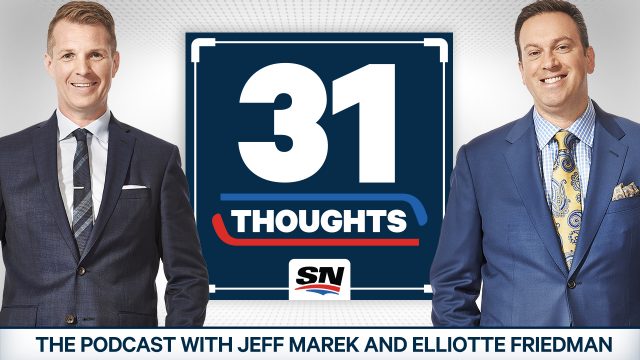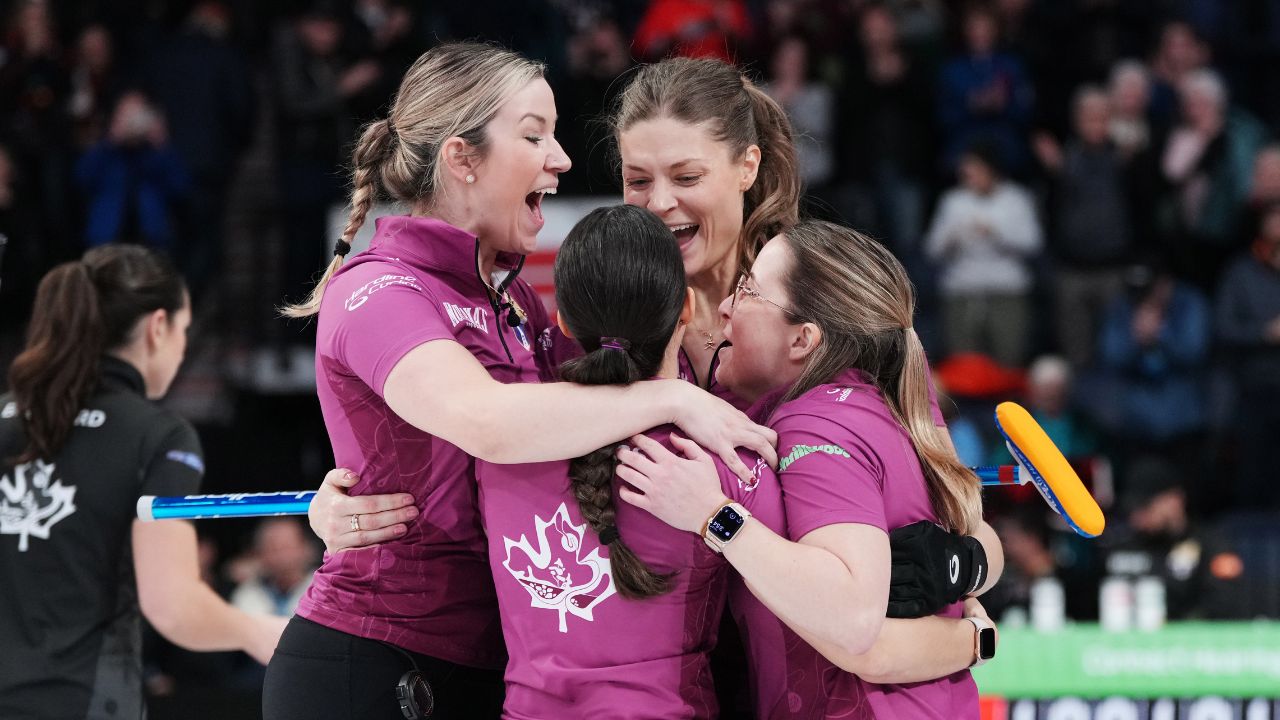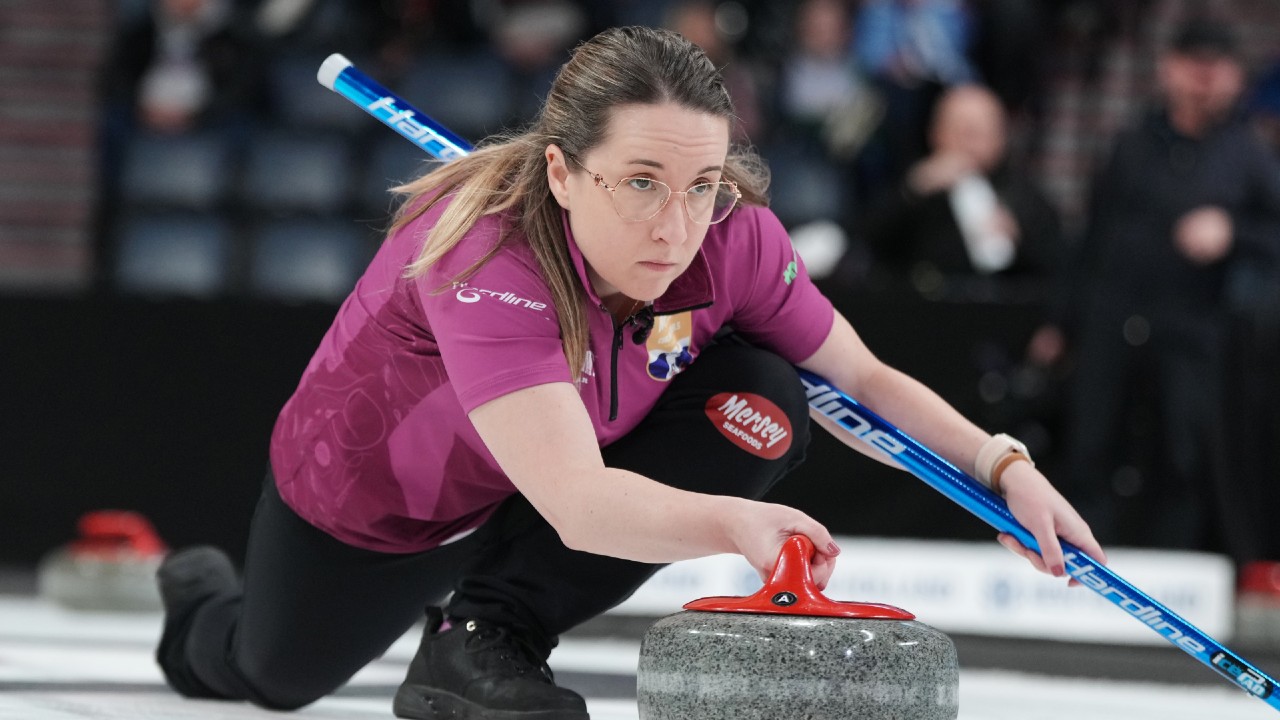
Following Sunday’s announcement of a ratified deal between the NHL and NHLPA for a 56-game 2020-21 season, we can expect the business of hockey to kick into high gear shortly.
But many questions remain. How will teams pressed up against a flat cap manage to get compliant by Jan. 13? How will taxi squads work, exactly? With the financial picture what it is, will the remaining notable unsigned UFAs now be able to find a home? And will all seven Canadian teams even be able to play games in their home arenas?
There are still a lot of moving pieces and things will change rapidly, but here is the latest buzz around the league.
THE UFA AND TRADE MARKET COULD START PICKING UP MOMENTUM SOON
Now that we know what the plan is for the coming season and how the roster rules will more or less work, the transaction market is now expected to kick into full gear.
While 10 teams are currently over the regular season salary cap of $81.5 million and another six franchises are within $2 million of it, there are still a few notable UFAs looking for work. From goal scorer Mike Hoffman, to offensive defenceman Sami Vatanen and defensive defenceman Travis Hamonic, teams that are looking to add an impact player have options to explore.
Those signings could start happening at any moment now.
“All these players are certain to find NHL jobs and the time to make decisions is now upon us,” Chris Johnston said on Sportsnet 590 The FAN’s Hockey Central. “I can’t give you the hour, but I would think we’re within hours of potentially seeing some signings come through because I know within the past two days that conversations have taken on more urgency with the representatives for those players.
“I think the whole industry has awoken from a slumber now and so I think it’s going to be a busy week, even though it’s the week of Christmastime, to see some potential trades and free agent signings.”
The dynamics of the trade market could be especially interesting this season, though it could be harder to make moves in-season when you consider quarantine rules that must be followed in some areas. This is especially true for the Canadian teams, as any player they acquire from an American team would not be immediately available to play, as they would be under normal circumstances. A mandatory quarantine would have to happen first.
“It’s called a working quarantine,” Johnston said. “You isolate for seven days, you have to pass four tests in those seven days, that would be the case for someone traded in-season. So I do think it will change the way teams look at trades. It won’t eliminate trades all together.”
Because of those quarantine rules, this season’s trade deadline day action might not be as furious. At the 2020 deadline, 32 deals were made involving 55 players, but it may make more sense to strike those deals earlier this time. With the trade deadline day landing on April 12 and the regular season set to end on May 8, it leaves just 26 days for a player to get through quarantine and contribute to a playoff run.
“I do wonder if (the trade deadline) might not be quite as busy as we’ve grown accustomed in recent years because you a) want to be making that trade, I don’t think you’re just making them for a trades’ sake and b) I think you’re incentivized to maybe go out and make those moves sooner because of those quarantine rules,” Johnston explained.
Also of note is that there are no trade restrictions being imposed by the league this season, so all teams can still make trades with each other at any time. What remains unclear at the moment is what happens to the cap hit of an acquired player who is in quarantine — will it still count as they go through the transition?
[radioclip id=5027032]THE GOALIE MARKET
Netminders specifically could be a hot commodity in the next few days for a few reasons.
First, each team must carry at least three goaltenders for the upcoming season, whether all three are on the pro roster, or two are carried plus one on the taxi squad. And second, while teams are limited to 36 skaters at training camp, they will be permitted to have an unlimited amount of goalies.
The Washington Capitals planned to have Henrik Lundqvist as part of their crease this season with Ilya Samsonov, but after he announced he was sitting out the season due to a heart condition, the team now has to consider replacement options.
With what’s expected to be a compact schedule, having a solid backup goalie will be more important now than ever, and even having a third stringer you feel good about will be important in case injury or a positive test hits the position. And remember, any player who would normally have to pass through waivers to go to the AHL similarly will have to do so if they’re moved from the pro roster to the taxi squad, so there may be teams interested in poaching someone they see as an improvement on their situation.
The goalie UFA market has mostly been picked through, but the veterans still available could suddenly now become targets.
“If you’re a goaltender who didn’t have a job yet like a Ryan Miller or a Jimmy Howard, I wonder if this is going to mean you get a call,” Elliotte Friedman pondered on the most recent episode of 31 Thoughts: The Podcast.
Craig Anderson, Cory Schneider and Mike Condon are a few other notable veterans still available to sign.
THE DYNAMICS OF THE TAXI SQUADS ON CAP-STRAPPED TEAMS
The interesting, one-off wrinkle to rosters this season is the introduction of taxi squads, which are required to be a minimum of four and maximum of six players. The idea is that these reserve players will be available to “call up” for a game in case of injury or a COVID-related loss and since they’ll be with the NHL team, there will be no quarantine requirements. These taxi squad players can practice and travel with the team, but they will not count against the cap or be eligible to play a game until they are put on the pro roster.
What’s interesting is how these taxi squads could be used by some teams who are up against the cap to create a little more room to potentially make moves down the road. There could be a lot more “paper transactions” made on the taxi squad with incremental cap savings in mind.
“One thing that benefits the Leafs and the handful of others teams that are going to be operating right at the cap ceiling — Vegas comes to mind as a team that’s going to be operating in a similar way — is essentially every day where you’re not playing a game you can transfer players to the taxi squad and not have their salary count for the day on the cap,” Johnston explained. “That might sound trivial or ‘what’s the big deal here’ but I think it’s a way certainly for teams to stay under the cap ceiling as the season goes on, but also a way for them to accrue cap space to make trades potentially as they get further into the year and closer to the trade deadline, which should be a benefit for teams that could be in trouble.”
So, for example, the Vancouver Canucks could theoretically move someone like Loui Eriksson to the taxi squad after he passes waivers and have a cap savings on his deal by replacing him with a player who is on a league minimum contract for an off-day. This couldn’t be done with every player of course, since you always risk losing someone who could get claimed.
For a team like Toronto which has a number of players on entry-level contracts who would not need to pass through waivers, these minor moves could be done on the regular and provide them with a little built-in advantage to maneuver around the cap they didn’t have before.
How does the taxi squad situation impact the #Leafs? @reporterchris weighs in with @DavidAmber, @StuMunrue & @jtbourne.#LeafsForever
Full chat https://t.co/0EhDZRFDIH pic.twitter.com/mo8qp4y13k
— Sportsnet 590 The FAN (@FAN590) December 21, 2020
“That’s the value for a team like the Leafs of having Rasmus Sandin and Nick Robertson in particular on their entry-level contracts because they don’t need waivers,” Johnston said. “They can be brought up or down as needed, brought up on days they’re going to play a game and put on the taxi squad all the other days. That would give the team a cap savings, but those players are still practicing and around the team every day, so their actual day-to-day conditions don’t change, it just changes the cap formula.”
HOW TAMPA BAY MIGHT GET AROUND ITS CAP SITUATION
One of the teams facing the tightest cap crunch are the Tampa Bay Lightning, who are currently $1.9 million over the cap and still have RFAs Erik Cernak and Anthony Cirelli to sign.
One rumour that has been floating around for weeks is that the team could trade Tyler Johnson — who passed through waivers a few months ago — to the Detroit Red Wings for Henrik Zetterberg’s contract. That would save Tampa Bay from Johnson’s $5 million cap hit, and allow them to put Zetterberg’s deal on LTIR.
But on Monday morning, Friedman also tweeted out a new detail on how the Lightning could use LTIR to stay cap compliant and create more room to re-sign their RFAs, though it would be a costly loss. Could an injured Nikita Kucherov start the season on the sidelines?
COULD ANY CANADIAN TEAMS HAVE TO RELOCATE OR PLAY OUT OF HUBS THIS SEASON?
While the Canadian division is planned to go ahead in 2020-21, the fact remains that not all provincial and local governments have signed off on the idea of allowing these teams to play all their games on home ice, and travel to other destinations in the country.
On Monday, Ontario Premier Doug Ford said no decision had yet been made on allowing the Senators or Leafs to host games. There is optimism that this will get figured out in time for the new season, but plenty of work still needs to be done.
If some, but not all, of the relevant authorities sign off on the NHL’s plan across the country, the league may have to explore the idea of hubs, starting a team on a long road trip, or relocating them for a time to another NHL city.
[radioclip id=5026897]“I believe the Canucks are aware of the possibility that they’re either going to have to start potentially with a long road trip or maybe play in Edmonton,” Friedman said on 31 Thoughts: The Podcast. “Some players have told me all that stuff is being floated around. But I’ve also heard Ontario and Quebec have also not given their approval yet. Ontario is now announcing it’s going into lockdown… We’ll see. I think they’re more confident about Ontario and Quebec than they are about B.C., but nothing is done until it’s done.
“One of the Montreal players told me there was a rumour going around that they might play in Toronto…if they had to. Not for sure. But if they had to.
“The other thing that could happen here is: could there be an Edmonton hub in Canada? What happens for example if B.C., and Ontario and Quebec put up a united front and none of those teams can play there? Well then does everybody start in Edmonton? Could that possibly happen? Or four teams start in Edmonton?”
While the NHL has not yet released details of its health and safety protocols, they are believed to include player testing every other day, if not more often, and strict rules on where players can go when visiting a city, mainly limiting them to the hotel and rink.
THE LATEST ON ZDENO CHARA
Chara will turn 44 years old in March and he remains a UFA, though if he decides to play in 2020-21 it would be a surprise if he ended up anywhere other than Boston. The Bruins have about $2.9 million in cap space, but Chara’s AAV was $3.75 million last season.
Can this relationship continue through uncertain times, and when Chara is pushing the limit with age?
“Well we still have to flush that out,” Bruins president Cam Neely said Monday. “You know I think Zee was waiting to see what the schedule looked like, how it may impact his decision, so we’re still flushing that out.
“For me it’s tough to say. You know we do want to take a look at some of these young left shot D’s that we have in our system to see if they can step up or is it the time for them to step up and see where they’re at in their development. We certainly respect Zdeno and everything he’s done for the organization and what he’s accomplished as a player and what he’s done both on and off the ice here in Boston, so you know it’s really just a matter of what his desire is and how the coaching staff and we feel what our lineup should look like or could look like depending on the development of some of these young guys.”
AND ONE SHORT NOTE ON MONTREAL: ARE THEY STILL LOOKING TO MAKE TRADES?
Habs GM Marc Bergevin had a busy off-season trying to upgrade his roster and clearly is looking to push forward with a team starting to skew younger, and that showed well in the summer playoffs.
Jake Allen was added to back up Carey Price, and hopefully keep their star netminder more rested come playoff time, as he was in 2020 when he looked like his old self, posting a .936 save percentage an 1.78 GAA. Joel Edmundson was added to beef up and add depth to the blue line.
Bergevin took a gamble in acquiring Josh Anderson to Max Domi, and then signing the power forward to a seven-year extension — Anderson had one goal in 26 games last season, but scored 27 times the year before that. Tyler Toffoli was signed off the free agent market after he showed well in Vancouver.
Consider these moves come alongside the arrival of much-anticipated rookie defenceman Alexander Romanov, and after promising post-season performances from youngsters Nick Suzuki and Jesperi Kotkaniemi, who both figure to play bigger roles this season. Tomas Tatar and Phillip Danault are both pending UFAs with one year left on their contracts, so decisions will need to be made on them.
And yet, Friedman noted on the podcast that Bergevin may not be done yet.
“Somebody told me, too, that Montreal might not be done, that Bergevin still wants to make his team better. And it fits his M.O. right? He’s not afraid.”
Buckle up, folks. Things are about to come fast and furious.





